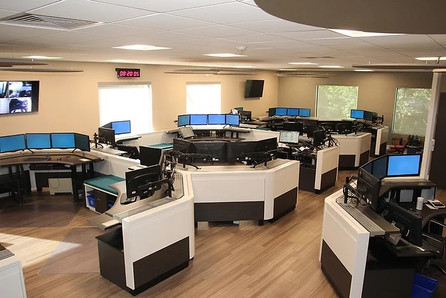The Essential Guide to Control Consoles for Secondary PSAPs
- Axel Trujillo
- Jun 26, 2024
- 2 min read
Public Safety Answering Points (PSAPs) are critical components of emergency response systems, serving as the first line of contact for the public during emergencies. While primary PSAPs handle the initial intake of emergency calls, secondary PSAPs play a vital role in managing specialized or complex incidents. This guide will explore the importance of secondary PSAPs and the essential features of control consoles that enable their effective operation.

What are Secondary PSAPs?
Secondary PSAPs are specialized emergency call centers that receive transferred calls from primary PSAPs or direct calls based on the type of emergency. They are staffed by trained professionals with expertise in handling specific types of incidents, such as fire, medical, or hazardous materials emergencies. By focusing on particular areas, secondary PSAPs provide more targeted and efficient emergency response coordination.
The Crucial Role of Secondary PSAPs:
1. Specialized Expertise: Secondary PSAPs have personnel with advanced training in handling specific emergency types, ensuring accurate assessment and response.
2. Improved Efficiency: By focusing on particular emergencies, secondary PSAPs can process calls faster and dispatch appropriate resources more effectively.
3. Enhanced Coordination: Secondary PSAPs facilitate seamless coordination between primary PSAPs, specialized response teams, and other agencies involved in complex emergencies.
4. Better Outcomes: With their specialized knowledge and resources, secondary PSAPs contribute to improved emergency response times and better overall outcomes for the community.
Essential Features of Control Consoles for Secondary PSAPs:
1. Multi-functional Design:
- Integrated communication systems (radio, telephone, CAD)
- Support for multiple monitors and flexible configurations
- Seamless switching between communication modes
2. Ergonomic Considerations:
- Adjustable workstations for comfort during long shifts
- Proper monitor positioning to reduce eye and neck strain
- Customizable layouts to suit individual operator needs
3. Technology Integration:
- Compatibility with various CAD systems and software
- GIS mapping capabilities with real-time data integration
- Support for both analog and digital radio systems
- Integration with telephone systems and recording solutions
4. Customization for Specific Needs:
- Modular design for easy updates and modifications
- Adaptable user interfaces to match specific workflows
- Scalability to accommodate growth and changing requirements
- Compliance with regulatory standards for each service type
Investing in the Right Control Console:
When building a secondary PSAP, selecting the right control console is crucial. A well-designed console should offer durability, ease of maintenance, and future-readiness. It should also provide a high level of customization to meet the unique needs of different emergency services, such as fire departments, EMS dispatch centers, and even hazardous materials response units. Below are some examples of PSAP installations with custom finishes and different types of accessories for public safety.
Looking where to start building your control center? We can help you.
Secondary PSAPs play a vital role in enhancing emergency response capabilities, and control consoles are at the heart of their operations. By investing in control consoles with the essential features outlined in this guide, secondary PSAPs can improve efficiency, coordination, and overall emergency response outcomes. Ultimately, well-equipped secondary PSAPs contribute to safer communities and better support for those in need during critical situations. Contact our team of specialists to get started on building a PSAP that meets your needs and requirements.








Comments